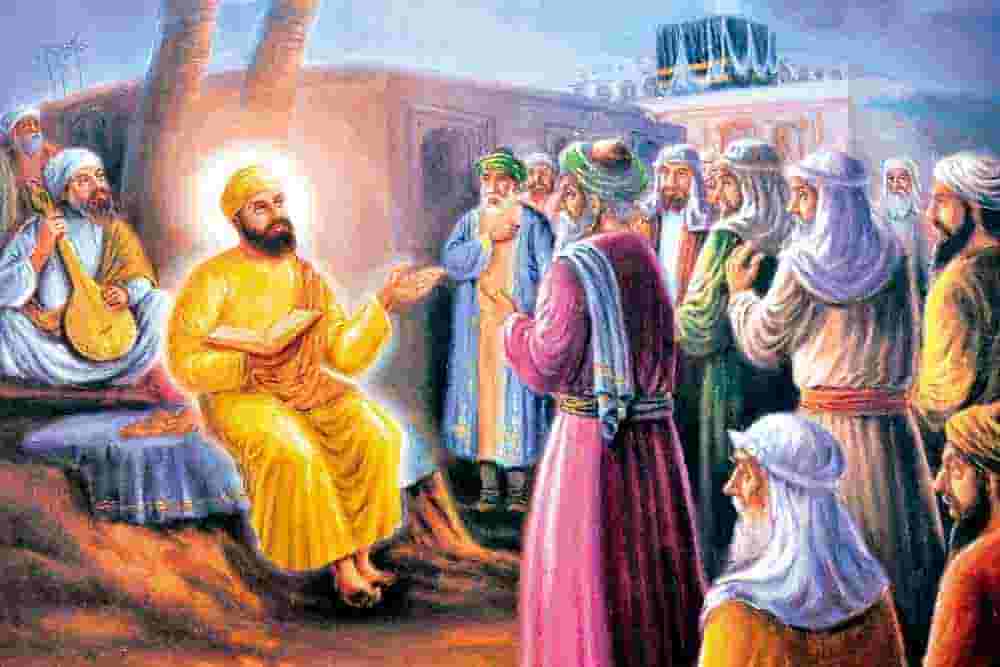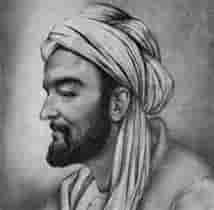4 Stages of Sufism – How to Become a Sufi
In this post, I will show you the process of how to become a Sufi and the 4 stages in Sufism. I will also compare the similarity between Sufi initiation and Christian baptism at the end of the post.
If you prefer to watch video, please refer to this video for more information:
Feel free to jump to any section you want to read first.
1. 4 stages of Sufism
To become a Sufi – the Complete Human Being, there are 4 stages of Sufism that the new initiates have to go through:
1. Sharia (Exoteric Path)
Element: Earth
Kingdom of nature: Mineral
Level of perception: Concentration
Person: A worshipper
In the first of the 4 stages of Sufism, Earth is the main element because the new initiate is still accustomed to earthly behaviors, which are fixed habits, conditioned thoughts, and stubborn beliefs.
He is attached to material thoughts and deeds, making himself prone to negative emotions such as anger, lust, and jealousy.
The initiate is in the kingdom of mineral because it implies the static condition, immobility, and passivity in his nature.
Therefore, this stage is called “Shariat”, which symbolizes the one who acts strictly according to basic laws of the Quran and Hadith. During this stage, the initiate has a chance to develop discipline, purify the body, and being aware of his own conduct.
*This level is when one being in touch with one’s natural behavior, or the nature of humanity.
2. Tariqa (Esoteric Path)
Element: Water
Kingdom of nature: Vegetable
Level of perception: Renunciation
Person: A renouncer
On this level, the element of water is present because the disciple now can exercise some capacities towards self-realization; therefore, he starts to walk on the path of Sufism.
This is the stage of growth, development, and potentiality. You can imagine the initiate is like the seed growing up from the ground of the Earth, so it represents the vegetable kingdom.
This level also symbolizes purification. Water is the fine substance of a spiritual kind containing the quality of natural energy. When this occurs, a certain movement will take place. Through the intervene of the Teacher, higher elements of the mind can be connected with the individuality.
However, the person cannot be purified unless he is willing to make a deliberate effort to be cleansed. He needs to exert his strong will to renunciate the worldly desire and focus his energy on spiritual goals.
In the second stage of the 4 stages of Sufism, the seeker starts to gain esoteric knowledge instead of exoteric knowledge of things. He begins to understand more about the hidden manifestation, that the Seen is only the expression of the Unseen.
*This stage is when one being in harmony with the Teacher (Sheikh).
3. Haqiqa (Inner Truth)
Element: Air
Kingdom of nature: Animal
Level of perception: Perception
Person: A knower
Air element represents perception. At the third stage of Sufism, the initiate is able to perceive truth and discern what is right and wrong.
This stage is when the real capacity of the seeker develops, which is different from the simple movement of the vegetable stage. Therefore, it represents the animal kingdom because the initiate is now actually moving on the earth.
The Seeker can gain the knowledge of pregnancy and sickness and is capable of seeing things beyond the physical world on this level. His consciousness rises to a perception of Truth higher than the Water stage. In other words, the experiences are there to replace or cancel out the ones from lower stages.
*This level is when one partaking of the Founder of the Teaching and becoming more aware of his essential “self”.
4. Marifa (Divine Knowledge)
Element: Fire
Kingdom of nature: Human being
Level of perception: Absolute knowledge
Person: A lover
One cannot attain the last stage of Sufism unless one is “ready” for it. Thus, this level is characterized by a mark of worthiness. This mark does not include minor criteria such as the age of an individual, how much time he has taken, his jobs, etc.
The fire element – the highest consciousness – gnosis – represents the contact with the Divine. This is the stage when one “dies before death”. In Sufism, the teachers must attain this level first before they lead their students to this “death”. In other words, they cannot teach others how to become a Sufi unless they are the Sufis themselves.
The seeker is now a full-fledged human being who can know things which cannot be taught, and only the creator blesses this person with that kind of knowledge. He is in perfect alignment with the universe and is willing to act according to God’s will.
The seeker has also successfully gained the knowledge of the Unseen through the awakening of 5 lataif and attain the level of al-insan al-kamil.
In the highest level of Sufism, the seeker no longer defines anything. Sufi masters describe this stage as receiving mystical intuitive knowledge of spiritual truth, reached through ecstatic or blissful experiences rather than rationally and intellectually acquired.
*This stage is when one is in harmony with the Absolute Reality.
2. Pledge of Discipleship
To become a Sufi, a Seeker must first start with the pledge of discipleship called “Bay’at” (or Bay’ah), which is the Islamic practice of swearing an oath of the Initiate to the Guide (Sheikh).
Although the demands for the Guide of the Seeker are very high, they cannot be accepted if the Guide thinks that the Seeker is not ready for the teachings. It requires a certain stage of nafs (soul development), discipline, and moral excellency to be accepted to the Sufi order (Tariqa).
Therefore, the Initiate must follow the guidance of the Guide to reach a particular stage, to perform certain work, or to acquire some essential knowledge. This stage may take a long time to attain and may not be attainable at all. This is because the Seeker is prone to lose interests in the face of challenges.
Hence, the stage before acceptance is the most crucial stage because the Initiate will be severely tested with many opportunities provided by the Guide. Unless the Seeker is willing to carry out what has been told, there is no contract between the Seeker and the Teacher.
According to Al-Ghazali’s philosophy, the Seeker must first start with the knowledge of Self. Only then he will receive the knowledge of God and of the universe:
“He who knows himself knows God.”
Remember that the pledge of discipleship is not regarded as an initiation. Initiation only happens when the Sheikh perceives that the Seeker is ready for it. This will follow by the Sheikh taking the Seeker into a room used for private exercises called “Hujra”. Only the teachers are allowed to enter this room, and it is usually guarded by other disciples standing outside of the room.
Essentially, becoming a Sufi is more about developing the inner qualities rather than doing the ritual practices. Thus, all of the training ground before one becomes a Sufi aim at developing one’s virtue, character, and morality.
3. The Initiation Ceremony
The Initiation usually happens on a Thursday morning or a Friday before midday. Before the initiation, the Disciple must prepare himself according to the Teacher’s instructions such as cleaning his body or freeing his mind as far as he can.
During the ceremony, the Seeker sits face to face with the Guide while holding his hands. They will recite holy texts and repeat invocations including the pledge and intention (Niyat).
After the initiation, fasting from sunrise to sunset for 3 days is required for the Disciple. He needs to pray 5 times per day according to the 5 pillars of Islam and concentrate his mind upon the meanings of texts provided for him by the Sheikh.
After the third day, the Seeker meets his Guide to receive “Tawajjuh”, which means “projection of spiritual power into the mind”. They repeat this process every other day.
Then the Teacher will require the Initiate to recite the Zikr of YA HAI, YA QAYUM. These words mean “O living One! O Eternal!”. This recitation is carried out with the Seeker being alone in a room, where he sits with folded knees and hands on knees with fingers in a particular posture.
The Guide will repeat this process as long as he perceives that the Disciple still needs it. He may also provide additional practices such as fasting. The goal of all these exercises is to develop the Seeker’s mentation to experience spiritual states called “illumination” (Tajalli).
When the Seeker is illuminated through the illusion of imagination, he proceeds to the stage called Activation of Lata’if (Subtleties). In Sufism, Lata’if are the special Organs of Spiritual Perception. Its singular is Latifa, which means “a sensitive spot which may become illuminated or activated”.
These subtleties are located in the physical body of the Seeker and activated by the act of directing attention to a certain spot of the body under proper circumstances. The Sheikh can also transmit his blessing power (Baraka) into the Initiate’s body to awaken these energy centers.
The activation of the Lata’if results in Major Saintship (Walayat Kubra). That is, the Sufi has acquired qualities that help him to detach from the world and operate in higher dimensions, but he is not totally detached from the world. This stage is when the Seeker starts to obtain spiritual powers, which are the abilities beyond the reach of ordinary people.
He is on the path of Sufism, but not totally becoming a Sufi yet. In Sufi doctrines, the real Sufi is the end-product, representing the Perfect Man (al-insan al-kamil) who reflects the quality of the Supreme Being. The Sufi, known as Perfect Saint (Wali Kamil), can cure illnesses, influence individual and groups, transport his awareness from a place to another and perform miracles.
*The Sufi activation of subtleties is similar to that of the 7 chakras system in Hinduism
4. Sufi Initiation vs Christian Initiation
There is a connection between the 4 stages of Sufism and the Christian initiation in the concepts of Water, Spirit, and Fire.
In Christianity, baptism is a testimony of faith to their potentiality for the First Experience (Water), which is said in the words of John The Baptist:
“I baptise you with water…. But he who comes after me shall baptise you with pneuma (Air – the Holy Spirit) and with fire…” (Matthew 3:11)
We can also see a similar concept in this verse below:
“Jesus answered, Verily, verily, I say unto thee: Except a man be born of water and of the Spirit, he cannot enter into the kingdom of God.” (John 3:5)
This initiation process takes place with water (purification from worldly matters), air (understanding), and fire (higher consciousness, awareness of God).
That’s why Sufis say that the Sufi way is compatible with every religion because the essence of every religion is the same. We are essentially the same person who wear different clothes.
In order to get the taste of truth, studying every religion is essential because each religion contains a piece of the puzzle that altogether makes up a more complete picture of Truth.





One Comment
Laban
I want to convert to sufi